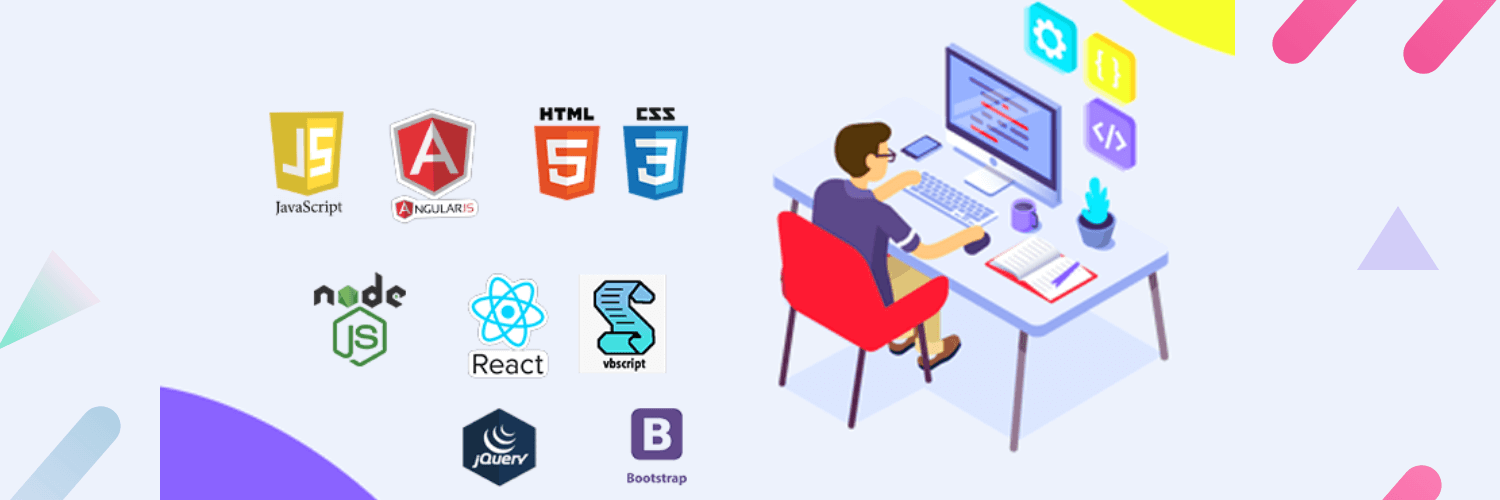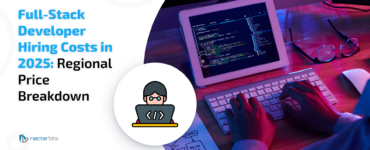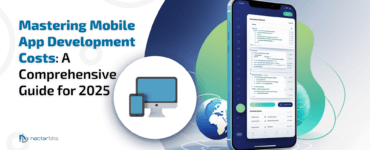Do you know what the secret ingredients are for developing the best-in-class mobile app?
Does it involve creating stunning user interfaces? Is the user experience it provides exceptional?Does it offer a range of distinctive features? Yes, but it is still an incomplete product that lacks both taste and usability.
What else? Ensuring the app is stable and secure is crucial in order to win over customers throughout their entire journey. This can be achieved by selecting the appropriate technology stack, which will ultimately lead to the mobile app’s success. If the decision is not made correctly, the business may miss opportunities or face failure.
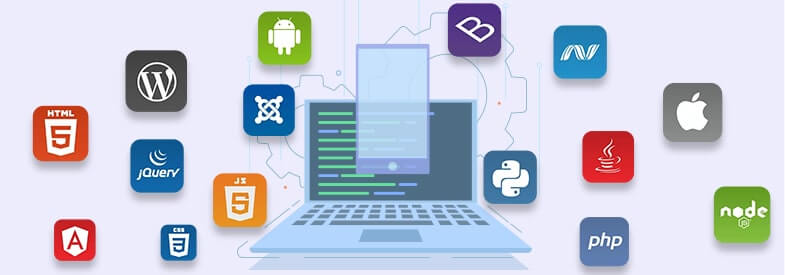
Oops! But you are not a tech geek? You need to count on suggestions or leave the tech stack decision to the development partner. That’s where the development partner must understand the project idea, goal, and every feature and functionality to make the right decision.
At Nectarbits, the team takes utmost care of the tech stack for the app development in the sense that the app should deliver unmatched UI/UX to make the customers happy and, at the same time, help businesses scale and excel with stable web app development.
Read more : Choosing a Technology Stack for E-commerce Websites
Here’s a quick overview of the technology stack and the right mix of tools leveraged to develop web apps:
Frontend
It’s a user-side interface with which users interact. Several components help in enabling interactions in a web browser, including:
- HTML5: The latest version of HTML helps in representing the information structure on the web page. It provides audio and video support.
- CSS3: While supporting the responsive design, it illustrates the look and format of HTML documents on different screen sizes flawlessly.
- JS: It’s used for crafting interactive and dynamic pages that enable even complex animations to render the best UX.
- TypeScript: For engineering complex and multi-tier apps, it helps in programming and proper code structuring.
- Framework: It’s pre-written functional code structured in files as packages, which eliminates the need to write every line of code from scratch. Mostly, React and Angular are two popular frameworks that are highly leveraged to build stable and secure applications.
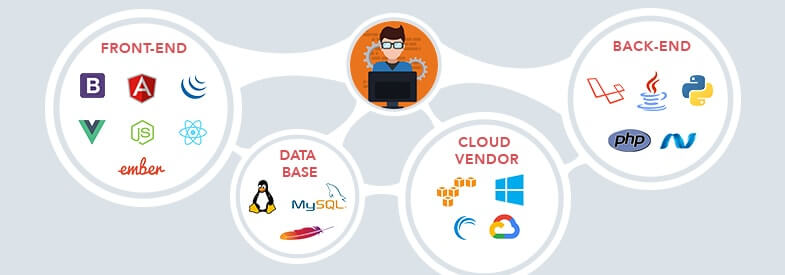
Backend
It’s a technology that handles the communication between client-side, server-side, and other backend components to accept the user input, process it, and provide the output. This is how the website works in the backend. The components of the backend are:
- Server-side software
It determines how servers, apps, and databases communicate and work with each other. Different backend frameworks like- Laravel, CodeIgniter, Flask, Lift, Meteor.JS, and others, were used to make backend development effortless.
- Background processes
To reduce business logic processing time and ensure high performance of the web app, the background processes used for the business logic were moved to external workers.
Database
The place where all the data from all records and files is collected in an organized manner. Different types of databases are used depending on the business project’s needs.
Redis: The sub-millisecond response time feature makes the database very special as it enables millions of requests every second.
MongoDB: The geospatial feature and document-based data model are the most important features among its numerous capabilities, which makes it a preferred choice for e-commerce, gaming, and event applications.
Elasticsearch: It facilitates faster retrieval of the data; that’s why it’s recommended for user-facing applications where quick results improve UX.
MySQL’s high performance and scalability make it the perfect fit for apps where multi-row transactions are executed in large numbers.
PostgreSQL: Due to its best analytical capabilities and SQL engine, it’s used in apps that require processing mammoths of data.
APIs Services
The interface establishes a connection between the web server and the client-server and also facilitates data transfer to and from the database for the web server. The APIs eliminate the need to write code from scratch and provide ready-made functionalities that are easy to implement and configure in the app. For instance, push notification APIs, payment gateway APIs, and more enable seamless integration and deployment of additional features. The web server delivers web documents and information to the clients who requested them via HTTP. Apache, Microsoft Internet Information Services (IIS), and Nginx are all types of web servers.
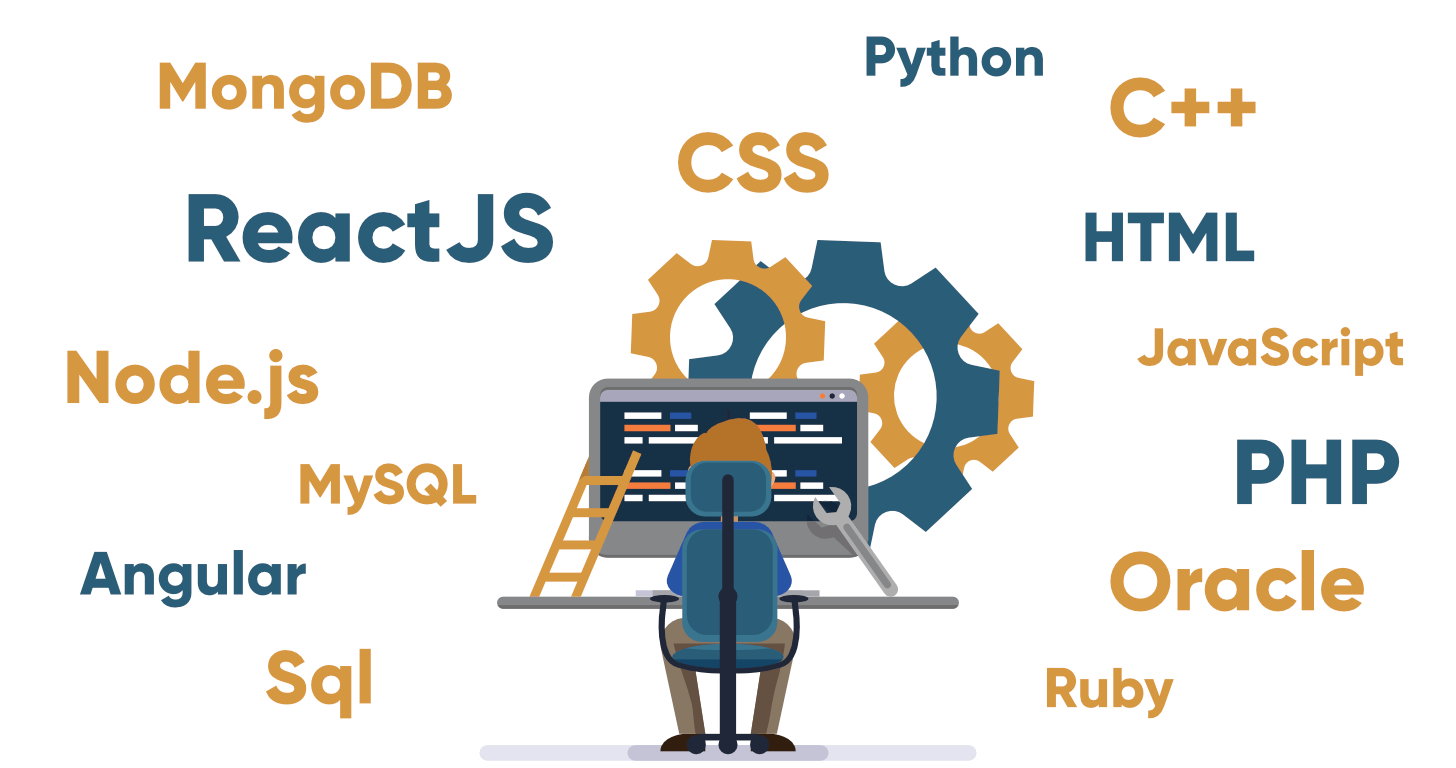
The factors that play a vital role in influencing the tech stack choice
Web app type
There are a lot of app considerations, such as the devices on which the app will function, the platforms it will run on, the network connection it requires, and the UX, which together help in deciding which language, library, and software to use for development.
App size
The size of the project complexity helps in defining the technology stack for the application. The projects come in three different sizes: large, medium, and small, along with varied latency, response, and performance needs.
Functionalities
The list of functionalities helps in deciding the technology stack and professionals required to build the web app.
User interfaces are a crucial part of the web application development technology stack. There are various frameworks available for building user interfaces, such as Vue.js, Angular.js, and React. The MEVN stack uses Vue.js as its front-end framework, which is one of the most popular frameworks out there. On the other hand, the MERN stack, consisting of MongoDB, Express, React/Redux, and Node.js, is gaining popularity due to the growth of ReactJS in front-end development and NodeJS in back-end development.
The MERN stack is useful for building high-end single-page applications, like the Plaid app. However, it is important to note that the MERN stack has limited server-side rendering, which can impact the performance of apps, especially those with complex user interfaces. It is essential to employ a steady software technology stack when making software or an application to reduce development time and coordinate resources effectively. Besides, the MEVN stack’s software components can be used to effectively design frontend and backend development and improve the functionality of your website or app.
The web development stack refers to a combination of programming languages, frameworks, and databases that web developers use to build web applications or websites. It typically includes both front-end and back-end technologies. The front-end development stack consists of technologies like HTML, CSS, JavaScript, and various web development frameworks.
On the other hand, the back-end development stack, also known as the server-side technology stack, includes web development frameworks like Ruby on Rails, Django, Flask, etc., as well as databases like MySQL and MongoDB. The choice of web development stack depends on the requirements of the project and the expertise of the development team. The back end, or server-side, technology stack is responsible for the working of the application, dependent on the client association. Programming languages, libraries, structures, servers, data set administration frameworks, and so forth are the huge parts of back-end tech stacks.
Markup language is an essential part of the web application development technology stack. HTML/CSS is one of the most widely used markup languages for creating web pages. HTML, or Hypertext Markup Language, is a standardized system used for tagging text files on World Wide Web pages, and it describes the structure of Web pages using markup. CSS, or Cascading Style Sheets, is another markup language that describes how HTML elements are displayed on a user’s screen. These markup languages play a crucial role in building the front-end of web applications and ensuring that the website’s content and design are presented correctly to users.
Amazon Web Services (AWS) is a cloud provider that manages the infrastructure for web application development technology stacks. It offers flexible pricing, allowing users to pay only for the services they use. AWS can also be used as the primary service for hosting web projects. Additionally, AWS has an extension called Serverless Stack (SST), which allows organizations to focus on building clean code while the cloud service provider executes functions that allocate resources dynamically. This makes web application development more efficient and streamlined. Microsoft Azure, another popular cloud provider, also offers similar functionalities for building and running applications and services without worrying about server management.
When it comes to web application development and product development, choosing the right technology stack, also known as the right tech stack, is crucial for successful software development. It will determine the success of your product and how well it performs in the market. The development team needs to consider various factors while choosing the front-end and back-end development tools for product development. A top-rated product development company can help you choose the right stack for your organization’s specific needs, ensuring improved product development and market success.
When it comes to the web application development technology stack, internet connectivity is a critical component. The internet acts as the backbone of web applications, allowing users to access and interact with them from anywhere in the world. A robust internet connection ensures that web applications operate smoothly and without interruption. Furthermore, developers must also consider internet security when designing web applications. This includes implementing SSL certificates, firewalls, and other measures to protect user data from cyber threats on the internet. Ultimately, internet connectivity is an essential aspect of any modern web application development project.
Scalability
The chances exist that you may want to scale the web app vertically or horizontally. The technologies to be used must have the potential to enable businesses to scale the app when required.
Security
Security stays at the heart of app development which makes the tech stack selection process very important. Embrace the tech stack that facilitates secured interactions carried out via API, enables secured access authorization for every request, takes regular backups, ensures adherence to compliances, and has infrastructure set up on the cloud server to ensure the best security of the app.
Time-to-market
When you want the app to launch quickly, you have two options: build an MVP and then enhance it, or embrace the ready-made solution and make your way to the market quickly. If you want full-fledged solution development, there are some frameworks available that can help you craft the app faster with in-built functionalities.
Read more : Trends in The Development of Mobile Ecommerce Applications 2020
The tips to avoid expensive mistakes of app failure
Sometimes, despite making apt decisions, the final app development suffers from unexpected results. It can be prevented by following a couple of tips:
- The detailed documentation should clearly illustrate the project specifications so that the development partner team understands it clearly and makes appropriate suggestions for the tech stack.
- Testing the app idea going MVP way is the best approach to not lose bundles on the final development if anything goes wrong at the later stage.
- The readymade solutions available in the form of community-build libraries or third-party integrations enable the creation of functionalities at speed.
- Using cloud hosting solutions to host web projects is a good practice, especially when the applications have unpredictable traffic.
- The optimized code and good infrastructure make the app future-proof.
Takeaway
What’s the best pick? There is no one-size-fits-all solution for the tech stack selection process. It depends on the project size, web app type, the range of functionalities, performance level, scalability, stability, number of users, and pretty more.
Beware! There is no time-proven technology that becomes a perfect fit for every web app. Irrespective of the tech stack brought enormous success to the leading players or your competitors; it can’t necessarily meet your project needs. Take the decision for a tech stack that helps your business accomplish the goals with #1 web app development.
What is a technology stack for web application development?
A technology stack for web application development refers to the combination of programming languages, frameworks, libraries, and software tools used to build a web application. It includes both front-end and back-end technologies that work together to create a functional and responsive web application.
Web development technology stack, also known as a web application stack, is a combination of programming languages, tools, and frameworks that developers use to create web applications. The right web development technology stack, or web application stack, depends on the specific needs of the project, including business needs.
It’s essential to choose the best stack for web development, or web application development, as it can make or break your web application development project. One must consider factors like scalability, performance, security, and ease of development while selecting the tech stack for web development, or web application development. There are several popular web development technology stacks, or web application stacks, available in the market, and choosing the one that fits your requirements, including business needs, is crucial for a successful project outcome.



